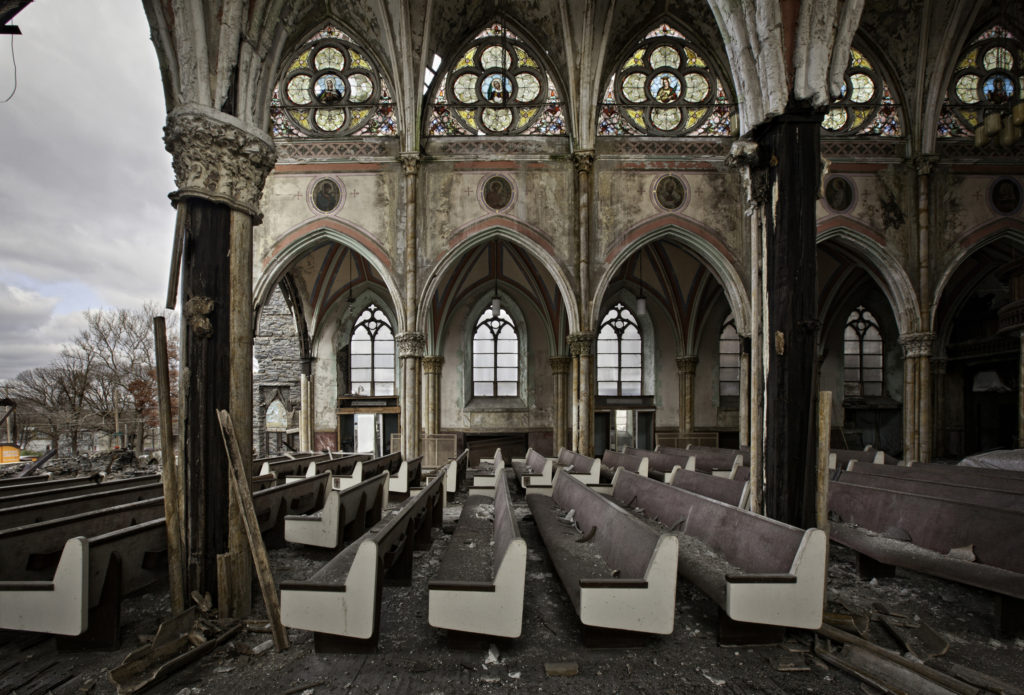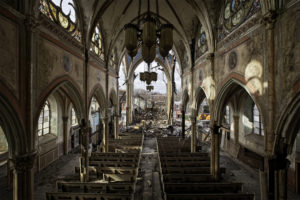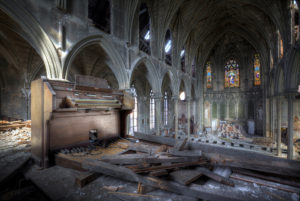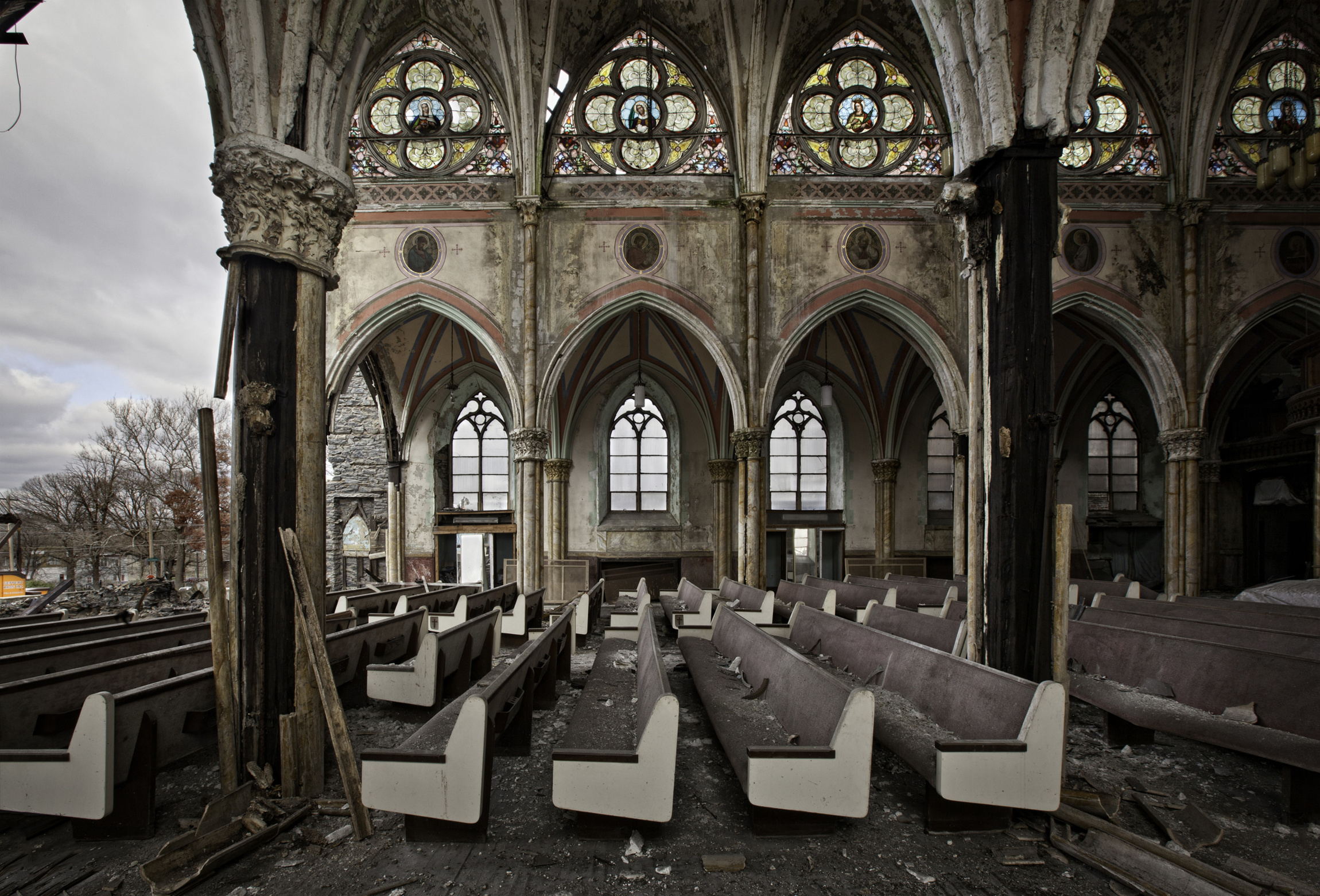
PHILADELPHIA (CNS) — Philadelphia photographer Matthew Christopher strongly believes in restoring abandoned buildings, but says if a structure is going to be demolished, it should at least be documented.
“There are absolutely ways we can be reusing historically significant buildings and we are not looking at them,” he said recently during a presentation at Philadelphia’s American Catholic Historical Society, which had an exhibit of some of his images.


Christopher views his work of photographing abandoned factories, power stations, hospitals, mental institutions, hotels and churches as part vocation and part avocation.
He was working in the mental health field when he first got the bug for photographing abandoned buildings. His first foray into the field was a night of exploring the buildings and tunnels of the huge complex at Philadelphia State Hospital at Byberry, which has since been razed.
One thing that struck him at Byberry and other mental health facilities he has documented was the beauty of the buildings.
“You can see they really cared about the patients when they were built,” he said.
Since then, he has documented the interiors of many abandoned factories, schools and resort hotels all over the country. One example is the Packard automobile complex in Detroit, which is reportedly the largest abandoned industrial site in North America. Another example is the federal government’s airplane graveyard in Arizona for thousands of obsolete aircraft.


When it comes to the abandoned factories, Christopher believes the issue is tied to the outsourcing of labor to other countries with the use of child labor and unsafe working conditions.
“This is a huge discussion and the worst thing we can do is not have it,” he said.
Churches are a special category and present a special challenge, he believes. He described the closed Catholic churches in Philadelphia that he has seen as beautiful and cultural treasures.
“Churches are the only buildings meant to be works of art with form taking precedence over function,” he said. “They are meant to inspire and speak of things that are greater than you. The loss of them is particularly painful.”
The problem is that churches, especially large churches, do not lend themselves to other uses. One rare exception, for example, is the St. Agatha Catholic Church complex in west Philadelphia. Closed in 1960, it was resurrected as the Cloisters Apartments. Units were built in the church, constructed in 1878, as well as the adjacent school and rectory buildings.
In any case, many of the church closings in Philadelphia are directly linked to the more utilitarian factory closings. First built were the factories, which attracted workers who, in the pre-automobile age, tended to live near their workplace, which meant a church would be built for them. When the factories closed, the people left and churches closed.
Some reminders of the old factories linger. For example, the huge Drueding factory in Philadelphia that processed leather and chamois cloth is long gone, but the private hospital that the philanthropic family built for its workers survives as the Drueding Center-Project Rainbow, a shelter for homeless women with children.
Christopher would like to see more efforts made to save buildings that bespeak so much of the history of the community.
“These places are cultural treasures,” he said. “You can’t save them all, but when you lose them, you are stuck with Arby’s and Footlockers. They were built to stand the test of time and contributed to our country’s greatness.”
Christopher’s work can be viewed at his website, www.abandonedamerica.us.
— By Lou Baldwin, Catholic News Service. Baldwin writes for CatholicPhilly.com, the news website of the Philadelphia Archdiocese.






